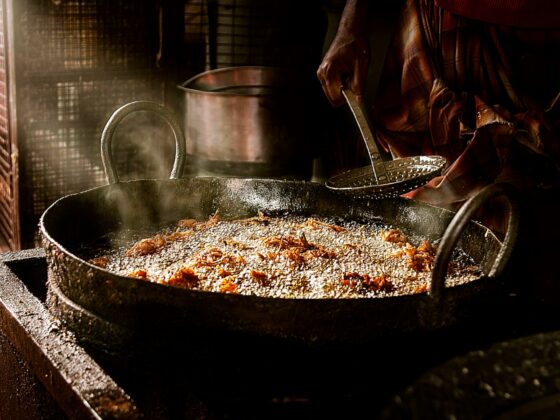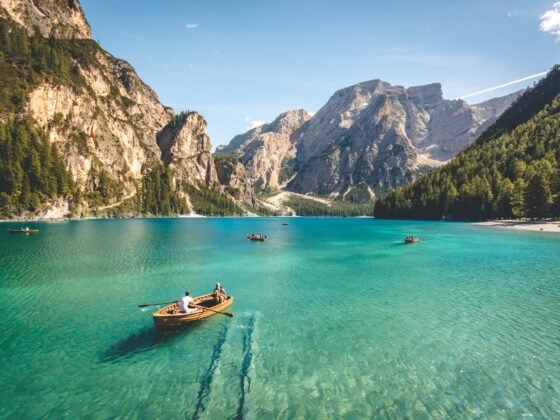On your adventure holiday, a daytrip or longer journey on an All Terrain Vehicle (ATV) can be a real highlight. It allows you to get to places and landscapes not accessible to other modes of transport, in an exhilarating way that will live long in your memory. But you should remember, you’re far from home in a potentially remote and isolated place, so before you head off you want to make sure thay your ATV is in excellent condition. You also want to ensure that your travel insurance covers their use.
ATVs and side-by-sides are getting more powerful, faster and heavier, thus, more control when slowing down, or coming to a complete stop requires serious braking power and the right brake components. However, breaks are often overlooked during regular maintenance checks. It’s not until you see longer braking distances when faced with typical obstacles when riding, or notice changes to the steering or handling that brake rotors, drums and pads get the attention they need. Moreover, worn parts are not only a safety hazard but will also affect your vehicle’s performance.
Periodic inspections of ATV brake components go a long way toward avoiding accidents, and having the right stopping power when needed. Manufacturers have recognised the superior braking performance of disc brakes, though drum assemblies, especially on the rear of smaller utility or kid’s quads, can still be found.
Additionally, there’s a considerable size difference between front and rear brakes since most of the stopping power is handled by the front wheels, Here, the discs are bigger than the rear, and paired with ATV brake pads with corresponding power. While discs and mating callipers should last, the pads endure the most wear and are the first to be replaced.
Anatomy of ATV Brakes
All ATVs and side-by-sides now have discs up front or all around. They’re clamped by calipers, with pistons pressing the pads inside against the discs when riders pull the brake lever, or step on the brake pedal. To muster enough friction and stop power, all systems rely on hydraulic fluid from main or slave cylinders and brake lines that push the fluid to the pistons. Bigger vehicles also include brake boosters that amplify the force from levers and pedals. To understand how ATV brakes work, and which parts to replace when you notice lower performance, some knowledge of the individual parts helps.
Discs
Discs or rotors on ATVs can be in varying designs. Recreational ATVs mostly feature single or dual solid discs, but racing quads and bigger UTVs move to slotted, drilled or wave discs for improved brake modulation, lower heat and to prevent warping or cracking in heavier braking. For vehicles with drums at the back, there are also drum-to-disc conversions. These offer more bite and better handling than the stock setup.
Callipers and Pistons
Caliipers slot over the discs and house the pistons that push brake pads against the discs. Varying calliper designs are seen on different vehicles. Floating types attach to the rotor via brackets and activate pads by moving sliding pins back and forth. This is an inexpensive setup, mostly found as stock on recreational ATVs.
Bigger-engined quads have fixed callipers, usually with multiple pistons. The configuration provides better brake distribution with pistons pushing pads across a wider disc surface. The higher stopping power pairs well with the higher speeds racing quads can reach, and the heavier weight of UTVs.
Brake Pads
Quad bike brake parts, and especially the brake pads, endure more abuse than those found in cars or trucks. They face mud, debris, water and dirt that accelerate wear and reduce braking performance. While seals and dust boots do a good job, upgrading your pads leads to parts that should last longer and brake better.
There are a few options for ATV brake pads. Sintered pads combine metallic particles, organic and synthetic fibers (like Kevlar), and bonding agents, to produce pads that can stand high friction and heat levels while minimising wear. They’re standard gear on quads with more power, providing a better brake feel through levers and pedals, shorter stopping distances, and improved performance in muddy or wet conditions.
The downsides are that they can get noisy, are harsher on the discs and the intensive manufacturing process means they’re not exactly cheap. Semi-metallic pads offer many of the performance advantages of sintered variants but at a lower cost. They consist of metals like copper, iron and composites, pressed together with filler materials. They don’t get as loud as sintered pads and cause reduced disc wear but they still manage moderate to high friction and heat in harder braking. This makes them adequate for a variety of riding scenarios. The only downside is that they produce moderate amounts of pad dust.
Organic pads are the cheapest option, and possibly the one that came with the quad. They consist of a mix of organic compounds, such as glass, rubber and fibers, and have good overall performance, with decent brake feel and bite, but aren’t intended for harder braking or bad weather. The positives are that they are gentler on the discs, make less noise and come at a lower price. Organic pads are the best choice for recreational rides at moderate speeds. However, they put out a lot of dust, so you’ll be cleaning the discs and wheels after longer rides.
Lastly, the newest option is ceramic pads and carbon-ceramic pads, consisting of ceramic fibers on a soft metal backing. These are some of the quietest pads available, are resistant to water and mud, and perform best at very high temperatures from pad and rotor friction. The higher prices are offset by lower disc damage and the fact that they last for ages.
Signs Your Brakes Are Failing
There are a few signs that tell you brakes and components need replacing:
- The brake light appears in the instrument cluster – This is an obvious one, often meaning worn pads or warped and damaged discs. Newer ATVs and side-by-sides can also alert you to problems with the ABS.
- Grinding and screeching noises – the most common cause is advanced pad wear, with the metal backing rubbing against the disc.
- Longer braking distances – worn pads, irregular disc wear, low brake fluid pressure, stuck calliper pistons, leaking brake lines and problems with the master cylinder are all potential causes of reduced stopping power, or brake fade. Braking takes substantially longer.
- Burning smells – stuck calliper pistons get hot quickly, and you’ll notice a burning smell even when not applying the brakes.
- Wheels pulling to either side – irregular wear in the pads or discs means your quad pulls to the side with less wear. This can potentially damage other parts, like the wheel hubs, axles and steering. A good idea then is to replace both front and rear and left and right pads at the same time.
- Spongy lever/pedal – soft or spongy brake feel points to low or contaminated brake fluid or issues with the main cylinders.
There are some easy fixes. Dirt, dust and items lodged in the pads are easy to deal with. And you could try to bleed the system for better pressure. Being easier on the brakes, using both the front and rear, or using engine braking by shifting into a lower gear will reduce wear. Obvious damage to any parts, though, means you’ll need replacements.
As mentioned, replace pads in pairs for even brake distribution. If you’re looking for racing-level performance, go with sintered or ceramic pads, swap out the stock discs, get multi-piston callipers, and replace rubber brake lines with braided steel. Choosing performance fluid also helps.












